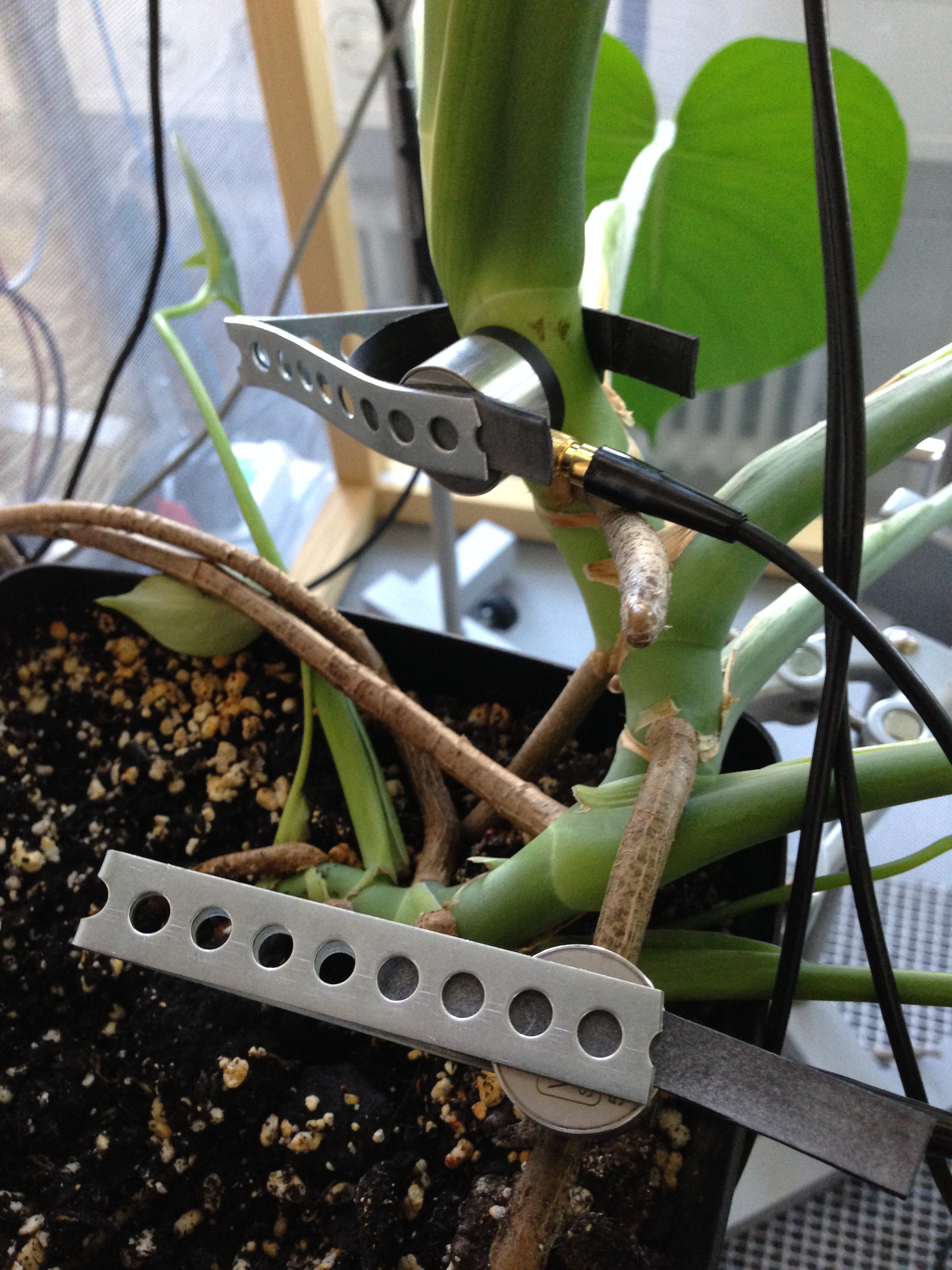
Acoustic emissions of a Scots pine (Pinus sylvestris).
Plant physiologists have known that plants emit sounds for several decades now. Many of these sounds are of transpiratory/hydraulic origin and are therefore related to the circulation of water and air within the plant as part of the transpiration process. The frequencies of these acoustic emissions lie partly in the ultrasonic range, depending on the species-specific characteristics of the plant tissues.
Some of the acoustic emissions are indications of embolism in the water transport system, which occurs when a plant is subjected to drought stress and desiccation. The excessive water tension in the water-conducting system leads to the rupture of the water columns in the plant vessels. Many studies have analysed these acoustic emissions in quantitative terms (number of emissions over time) but few have focused on the signal properties (frequencies, waveforms and amplitudes) so far or on the spatial distribution within the plant.
Each plant species — in fact each plant individual — has its own acoustic signature, related to its structure and to the local climatic conditions. Investigating the acoustic emissions of a tree in response to dynamically changing climatic conditions might reveal biological or physical properties that place them in a broader ecophysiological context and enable us to explain processes that are not yet fully understood.
Various artistic projects have subjected plant sounds to an artistic investigation with a view to revealing a world that is normally inaudible. These include Justin Bennett’s ‚Hoor de Boomen‘, Alex Metcalf’s ‚Tree Listening‘ and Christa Sommerer and Laurent Mignonneau’s ‚Data Tree‘ to name just a few. Our project (which is situated between the domains of artistic research and natural science) examines the aesthetic means of illustrating phenomena in nature but also aims to generate new knowledge through exploration using artistic and sound technology tools, systems and practices.
Have a listen: Acoustic emissions of a Scots pine (Pinus sylvestris)

